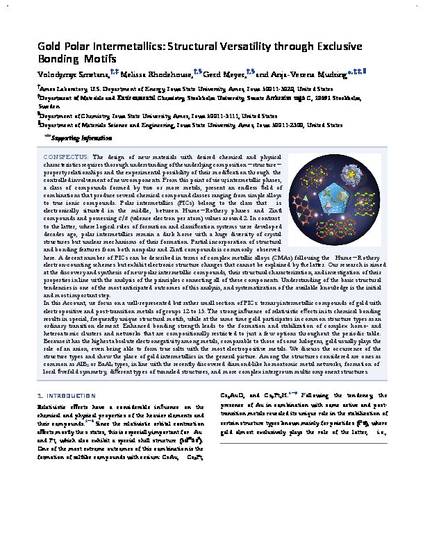
The design of new materials with desired chemical and physical characteristics requires thorough understanding of the underlying composition–structure–property relationships and the experimental possibility of their modification through the controlled involvement of new components. From this point of view, intermetallic phases, a class of compounds formed by two or more metals, present an endless field of combinations that produce several chemical compound classes ranging from simple alloys to true ionic compounds. Polar intermetallics (PICs) belong to the class that is electronically situated in the middle, between Hume–Rothery phases and Zintl compounds and possessing e/a (valence electron per atom) values around 2. In contrast to the latter, where logical rules of formation and classification systems were developed decades ago, polar intermetallics remain a dark horse with a huge diversity of crystal structures but unclear mechanisms of their formation. Partial incorporation of structural and bonding features from both nonpolar and Zintl compounds is commonly observed here. A decent number of PICs can be described in terms of complex metallic alloys (CMAs) following the Hume–Rothery electron-counting schemes but exhibit electronic structure changes that cannot be explained by the latter. Our research is aimed at the discovery and synthesis of new polar intermetallic compounds, their structural characterization, and investigation of their properties in line with the analysis of the principles connecting all of these components. Understanding of the basic structural tendencies is one of the most anticipated outcomes of this analysis, and systematization of the available knowledge is the initial and most important step.
Available at: http://works.bepress.com/gerd-meyer/11/
